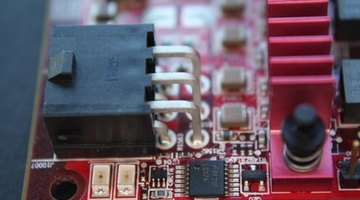What Does Non-Circuit Limiting Mean?
Non-circuit limiting systems differ from the circuit breakers used in most modern electrical systems, which allow only a certain amount of current to flow through the circuit. While most non-circuit limiting systems have been replaced since limiting circuits were introduced in the 1960s, non-circuit limiting systems still exist in older homes.
Non-Circuit Limiting Systems

In a non-circuit limiting system, no allowances are made to limit the amount of current that flows through the circuit. Because of this, the circuit has no set maximum current, and spikes can occur in the voltage flowing through the circuit.
The Hazards of Non-Circuit Limiting
Spikes in currents can lead to a number of hazards. An excess of current can cause a circuit to overload and break: a non-circuit limiting system uses fuses in order to deal with such spikes and prevent electrical fires and permanent damage to the system. If too much current runs through the system, the spike will blow the fuse. The disadvantage of this method is that the entire fuse must be replaced before the circuit will run again.
Solution to Non-Circuit Limiting
Beginning in the 1960s, the hazards involved with non-circuit limiting were recognized and new steps were taken to protect electrical systems from overloading. Starting in this period, circuit breakers using rejection tabs were introduced: these tabs would cut the circuit if it exceeded a certain amount of current, keeping it from overloading. Because of this, a circuit could be reset simply by switching it off and on, rather than physically replacing the fuse.
Writer Bio
Jon Zamboni began writing professionally in 2010. He has previously written for The Spiritual Herald, an urban health care and religious issues newspaper based in New York City, and online music magazine eBurban. Zamboni has a Bachelor of Arts in religious studies from Wesleyan University.
Photo Credits
- electronic circuit board image by xymm from Fotolia.com
More Articles



